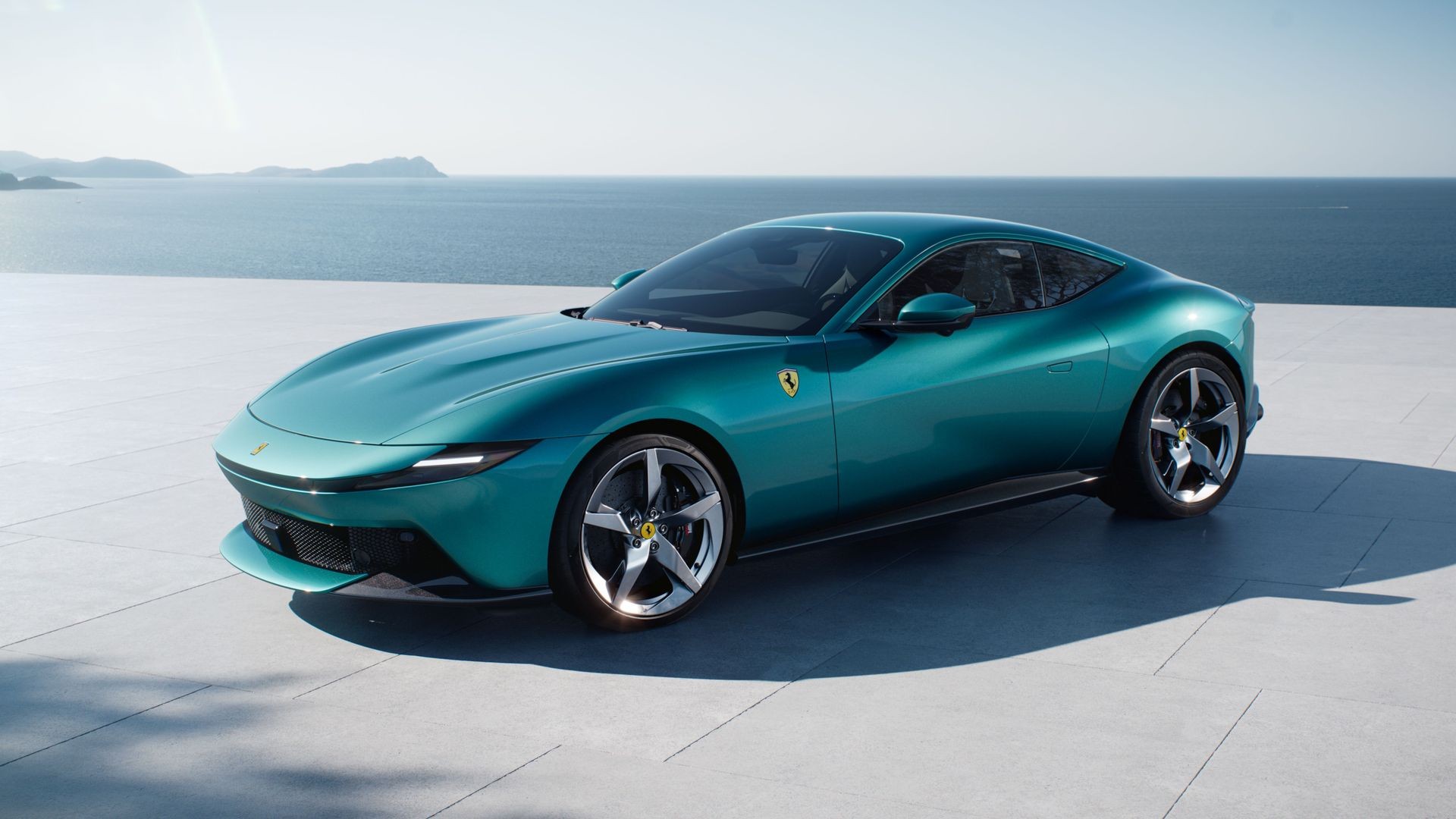A Closer Look Into The Amalfi
Interior
Inside, the Ferrari Amalfi adopts a dual-cockpit layout that envelops both driver and passenger in two visually connected cells, linked by the dashboard, door panels, and central tunnel. The cocoon effect is enhanced by a faceted surface that breaks the symmetry and highlights the central touchscreen display, creating a formal interaction between the two occupants. The interior design has been simplified to achieve a clean and contemporary language, with extensive use of premium materials and integrated technological solutions. The dashboard features, for the first time, a monolithic layout in which the instrument cluster and air vents are fused into a single block. The central tunnel, milled from a block of anodized aluminium, is suspended and sculpted, housing functional elements such as the gear selector gate, key slot, wireless charging pad, and secondary controls. The door panel grips are integrated into sail-like shapes that define the two front cells, while the woofers are hidden behind perforated aluminium surfaces, contributing to a technical and refined aesthetic. The Ferrari Amalfi’s onboard experience has been designed to offer intuitive, engaging, and technologically advanced interaction, thanks to a completely renewed HMI (Human-Machine Interface) system and a series of solutions aimed at enhancing comfort and quality of life on board. The new steering wheel, equipped with physical buttons, marks a return to tactile controls, with a layout designed to ensure maximum ergonomics and ease of recognition in all driving conditions.Exterior
The Ferrari Amalfi represents a new interpretation of the archetype of the 2+ coupé berlinetta with a front-mid-mounted V8 engine, blending tradition and innovation in a design language that evolves the aesthetic standards of the Maranello marque. The Ferrari Styling Centre team, led by Flavio Manzoni, drew inspiration from the elegant proportions of the Ferrari Roma, pushing further to define a more sculpted and modern form without betraying the essence of Ferrari’s 2+ sports cars. The exterior design develops from a sleek, monolithic speedform that gives the car a strong and dynamic identity. The surfaces are treated with a minimalist approach, where sharp lines and geometric volumes define a sculpted and coherent body. The wedge-shaped theme running along the side, together with the lighting units integrated into technical cuts, contributes to a refined and contemporary aesthetic. The front, devoid of a traditional grille, is distinguished by a floating body-coloured wing above a dark recessed band, discreetly integrating sensors and headlights. The lower splitter completes the composition, emphasizing the visual width and sportiness of the whole. The rear is defined by a strong character line that wraps around the entire volume, culminating in a compact and clean tail. The tail lights are hidden within essential graphic cuts, evoking classic Ferraris while using a modern visual language. The wide and functional diffuser openly declares its aerodynamic purpose, while the rear screen merges with the spoiler profile, creating a distinctive stylistic signature. Highlighting the car’s personality, the launch colour, Verde Costiera — a brilliant teal green inspired by the reflections of the sea along the Amalfi coast — enhances the sculpted surfaces and brings a fresh, vibrant look to the whole.Powertrain
The engine of the Ferrari Amalfi represents the latest evolution of the 3855-cc twin-turbo V8 from the F154 family, the one that has received the most international awards in recent automotive history. In this configuration, the power unit has been optimized to deliver a maximum output of 640 cv at 7,500 rpm, with a specific power of 166 cv/l and a redline raised to 7,600 rpm, allowing full exploitation of its continuously increasing power curve. The performance increase was achieved through an advanced turbocharging management system, enabling independent control of the rotational speed of the two turbochargers with dedicated calibration and an increase in the maximum turbo speed up to 171,000 rpm. This approach improves throttle response and boosts pressure control precision, also thanks to the introduction of dedicated pressure sensors for each cylinder bank. The new engine control unit, already used in models such as the 296 GTB, Ferrari Purosangue, and Ferrari 12Cilindri, has allowed the engine’s full potential to be harnessed. Throttle response is now even quicker thanks to a series of advanced technical solutions: a flat-plane crankshaft, compact low-inertia turbines, twin-scroll technology for separate exhaust gas management, and a single-scroll manifold with equal-length runners. These elements contribute to a sensation of continuous and progressive power delivery, with a torque curve shaped to provide stronger pull at mid and high revs in all gears. Overall powertrain efficiency benefits from solutions such as the dry-sump gearbox configuration, low-friction bevel gear, and clutch torque management strategies that ensure extremely smooth urban driving, especially during Start&Stop phases.
